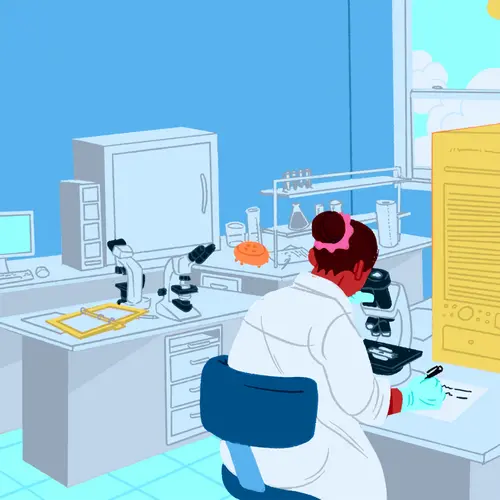It’s one thing to know your hair is going to fall out. It’s another to see it actually happen. Hair loss from chemotherapy is one of the side effects people dread most. Though temporary, it can bring up big feelings.
All chemo drugs don’t cause hair loss, also called alopecia. If it happens, you’ll usually notice it within the first 2 weeks of treatment.
Hair loss is a sign the drugs are doing their job. And while it changes the way you look, it doesn’t change who you are or how you manage your treatment.
What to Expect
Hair usually grows about a half an inch every month on your head. This is because your hair follicles, which are tiny openings on the surface of your skin, divide quicker than most other cells in your body.
Chemotherapy drugs attack all cells that grow rapidly in your body, whether they’re cancer cells or not.
No two people have exactly the same experience with chemo-related hair loss. Much depends on the timing of your treatments and the kind of chemo drugs your doctor prescribes.
Your hair may thin, become patchy, look discolored, and fall out in strands or in clumps. It can happen slowly or quickly. You’ll probably notice more hair on your pillow, in the shower drain, and on your brush or comb.
You may continue to lose hair throughout chemo and for a few weeks after treatment stops.
Your scalp is just one of many places you can lose hair during chemo. Depending on the type of chemo drug you use, hair loss may also affect your eyelashes, eyebrows, facial hair, armpits, arms, legs, and pubic area.
Can You Prevent Hair Loss in Chemo?
There’s no guaranteed way to save your hair during chemo. The most common method people try is a cooling cap, also known as scalp hypothermia. It’s a fitted cap filled with cool liquid that you can wear during treatment. The idea is that it slows down the blood flow to your scalp so the chemodrugs can’t kill those cells.
Some people say that if the chemo drugs can’t get to your scalp, some cancer cells might remain -- but that’s rarely been reported. There are side effects as well, including head and neck discomfort. Ask your doctor if a cooling cap is OK to try.
Preparing for Chemo-Related Hair Loss
The more you know and do up front, the more prepared you’ll be when your hair changes. Ask your health care team for advice specific to your body and situation.
Adjust your hair care habits. Comb or brush gently, and don’t weaken your hair with products that contain bleach, menthol, or alcohol.
Decide on your strategy. If you have longer hair, consider a shorter cut to make it look full. You can also shave your head. Some people feel comfort in taking action before the hair loss starts.
Consider how open you want to be about it. To cover or not to cover: There’s no right or wrong answer to this. It’s a personal choice.
If you want to wear a head covering, like a scarf or wig, plan to have one or two before your hair starts to fall out. You’ll find videos online that show you different ways to wear a scarf as a head covering. If you decide on a wig, there are wig experts who can fit you for one so you’ll feel comfortable and confident. Your insurance may cover the cost of a wig: Ask your doctor for a prescription and list of recommended local or online shops.
When Your Hair Starts to Come Out
Focus on self-care. Wash your hair as little as possible, and use gentle products. Take care of your scalp. Wear a hat or scarf to protect it from heat and cold, and apply a sunscreen with a sun protection factor (SPF) of at least 30 every day. And if your scalp itches or feels sensitive, go easy with your brush or comb. Avoid rollers, hair dryers, and irons. You can also style your hair with your fingers instead.
If chemo-related hair loss triggers tough emotions, be gentle with yourself. Some people going through this feel depressed, anxious, frustrated, angry, or a combination of emotions. This may be something you want to discuss in a support group or with a counselor who works with people dealing with cancer. Give yourself room to feel and work through whatever comes up.
Hair Regrowth After Chemo
For most people, chemo-related hair loss is temporary. After chemo stops and your follicles are healthy, your hair should start to grow back. Look for regrowth to start within 3-6 months from your last treatment. You may even see a bit of regrowth while you’re still in treatment.
If you choose to wear a scarf or wig, you can continue to do so for as long as you want -- it won’t damage or stunt your new hair.
New hair needs lots of TLC. It may show up in patches, or even with a different color or texture than it did before.
Don’t color, bleach, perm, or straighten it: Much like the rest of your body, it’s best if you give it a chance to grow healthy and strong.

